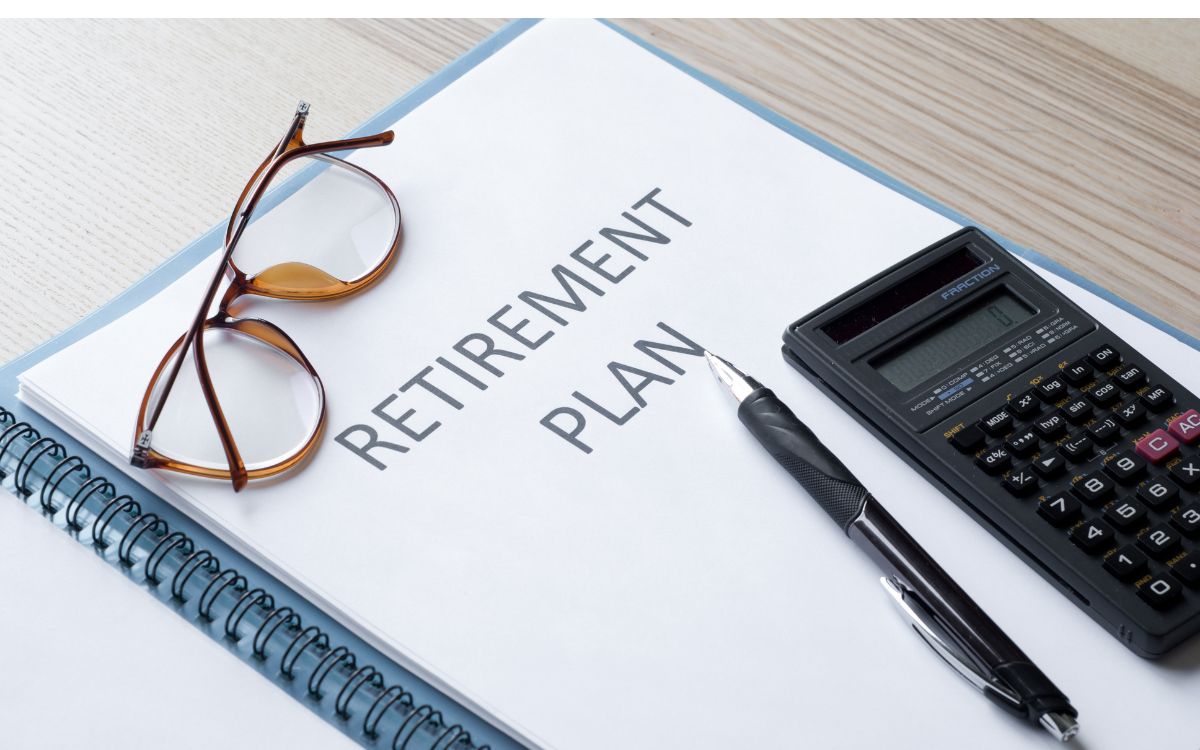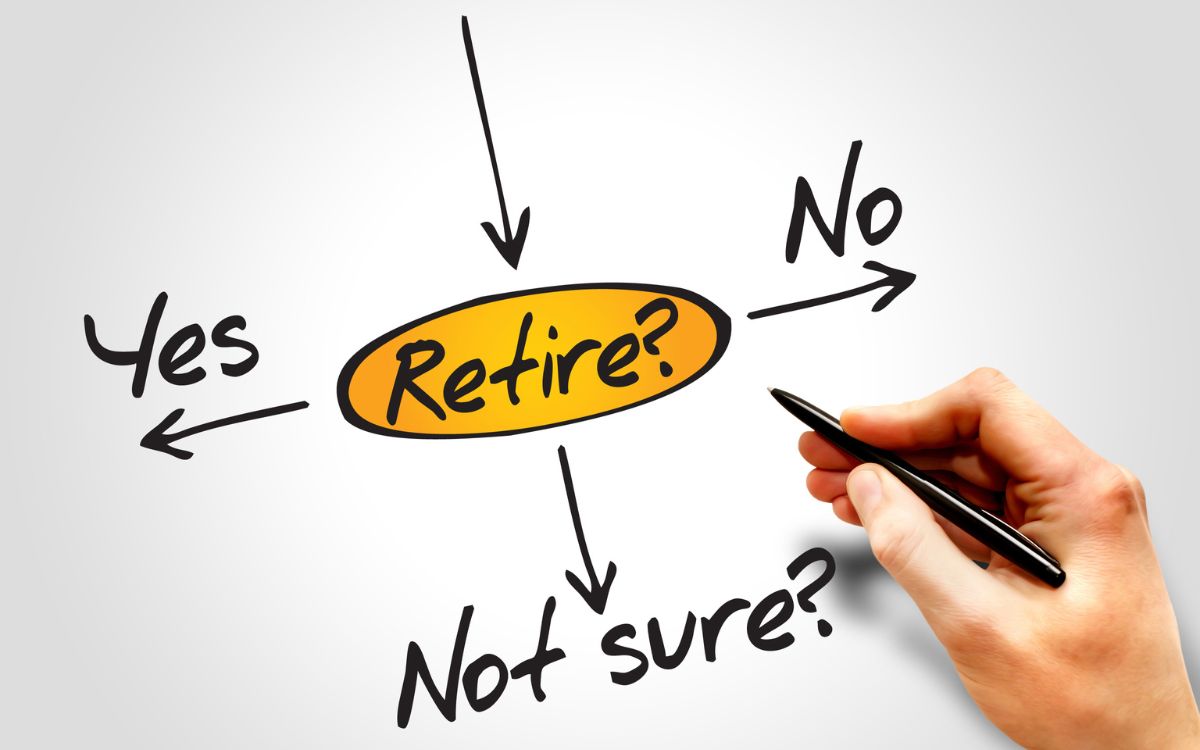After more than two decades teaching in a middle school classroom, the door to retirement is beginning to open. I would love to retire as soon as I am eligible, so what kind of pension do teachers get?
Since my career has been spent shaping minds and teaching middle schoolers how to read and write effectively, I had to do a little research. Basically, there are two types of retirement plans: defined benefit and defined contribution, and some states are beginning to mesh the two into a hybrid plan.
Most public school teachers will have a defined benefit plan, which is managed by the state. Private and charter school teachers will likely have a defined contribution plan, such as a 401k or 403b. Both retirement plans involve the teacher and their employer contributing to the plan while the teacher is working. The teacher then receives payments during their retirement.
Defined Benefit Retirement Plan

Teachers are considered vested once they have worked a required number of years. The defined benefit plan allows retirees to receive payments from the plan for the remainder of their life. Knowing you’ll have a set monthly amount of income during retirement is a major plus.
Many plans also offer survivor benefits, which allows loved ones (a spouse or children) to receive benefits if they live longer than the retiree. The downside is, that if you leave the profession before working the required number of years, you no longer qualify to receive the benefits of the plan.
Defined Contribution Retirement Plan
This can be thought of as a savings account for retirement. As with the defined benefit plan, both the teacher and the employer make contributions. Unlike a defined benefit plan, a defined contribution is owned by the teacher from the start, with access to the account regardless of how long she remains in the profession or if she changes careers. A major drawback, however, is once the money is gone, it’s gone.
What Will My Monthly Income Look Like in Retirement?
This is going to look different for everyone. The basic formula in determining the monthly income a teacher will receive during retirement on a defined benefits plan uses the following factors: the teacher’s pay when she retires, the teacher’s age upon retirement multiplied by a factor, which varies depending on how long the teacher waits to draw benefits, and the number of years the teacher worked as a teacher or administrator. With a defined contribution plan, the account value will fluctuate over time depending on the economy and the performance of the investments.
Hybrid Plans
With the debate about the sustainability of a defined benefit plan, some states have begun exploring options which mesh some of the best features of defined benefit and defined contribution plans. Hybrid plans offer employees retirement plans which are dependable and something they can take with them, such as a smaller pension, Social Security, and a defined contributions plan. Some of the states offering hybrid plans to new hires are Hawaii, Kansas, Michigan, and Rhode Island.
Which States Have the Best Retirement Plans?
In a 2021 publication by Bellwether Education Partners, a point system was used to rank teacher retirement plans by state, taking into account teacher/employer contributions to retirement plans, as well as the stakes the taxpayers hold with public money, which help support the pension system. Four groups were assessed in the ranking: short-, medium-, long-term teachers, as well as taxpayers. In a perfect world, the state with the best teacher retirement system would earn 100% of the available points.
Overall, it was found that South Dakota was closest with 88.4%, followed by Tennessee, Washington, Utah, and New York, rounding out the top 5. Finishing in the bottom five were Pennsylvania, Connecticut, Kentucky, New Jersey, and Illinois with scores ranging from just 34.9% to 43.3%. Some states had strong ratings for short-term teachers, for example, and much higher scores for, say, taxpayers.
In other words, what may be viewed as “good” for teachers, may not be viewed the same for taxpayers and vice versa. In a nutshell, it was determined that teacher retirement plans vary quite a bit from state to state, further emphasizing the importance of understanding the retirement plans offered in the state in which you teach.
Am I Ready to Retire?

There are many factors to consider when thinking about retirement, including when you plan to retire, how old you will be when you retire, and how willing you are to take risks with your hard-earned income. It is important to take a look at the retirement plans available to you: defined benefit vs defined contribution. Will you be eligible to collect social security benefits in retirement? Over 40% of teachers working today are not eligible.
If you won’t be collecting social security, consider additional investment and saving opportunities on your own to supplement your income in retirement. A financial advisor can assist you in planning your retirement, choosing investments, how much to save, and more. Of course, the more you can make your money work for you, the more financially secure you will be as you enjoy your retired years.
How Can Teachers Keep Their Retirement on Track?
Many teachers may need to supplement their retirement plan’s income. Planning early on for retirement could very well save you tens of thousands of dollars in the long run and offer you peace of mind knowing that your finances will be in solid shape when it comes time to turn in that retirement notice.
Your Retirement Plan
Understanding your retirement plan and periodically playing around with the formula, such as–if I retire at year-X, what will my retirement income look like–will give you a better idea of the logistics and reality of your future life as a retiree, as well as what additional steps you may want to consider taking while you are working to better prepare financially.
Social Security
Many teachers will be able to collect social security benefits, so they will have some extra income with their retirement plan. But, since 40% of teachers currently working will not be eligible for social security, it is extremely important to find out which camp you will be in, so you can better prepare for your financial future.
Save Additional Money
If you have switched careers, are divorced, or just plain old don’t think you will be able to live comfortably on your retirement plan, you will want to consider additional ways to save or invest money. Opening a Roth IRA is an easy way to begin saving on your own, according to experts. After-tax money is deposited, so any money withdrawn after age 59 ½ or older is not taxed. Other options are 403(b)s or 457(b)s, but it can be cumbersome to determine which ones offer the best plan for you, without paying high fees. It is important to do your homework, and, if necessary, seek the help of a financial advisor.
Planning for Retirement Tips

It is a good idea to begin setting goals for your future as soon as you can. Whether you may be just starting out as a teacher or just a few years away from retiring, thinking about and preparing for your retirement can’t happen too soon or too often.
- Decide how much to spend and how much to save and stick to it as much as possible.
- Knowing where your money is going and how it is working for you will enable you to make informed decisions in the future.
- Regularly check your investments and your retirement plan.
- Fight the temptation to cash in on investments early to cover other expenses.
- Work with a financial advisor who can create a plan that is personalized for you and your needs.
Planning for your retired life can seem like a daunting task with many different factors and scenarios to consider, definitely something which should not be taken lightly. After all, there are no redos–you can’t go back in time and make different financial, professional, or personal decisions. But, you can put in some work understanding your retirement plan and making informed financial decisions to ensure you are well-prepared for retired life.
Does all of this mean you should consider moving and teaching in a different state? Should you think about a career change? Will you need a part-time job when you retire? Do you need to think about teaching longer than you originally intended? Ultimately, the answers to these questions, and others, are up to you. At the very least, it is probably time to sit down and take a good look at your goals for retirement.
Maybe put on a fun, easy-listening album, like Jimmy Buffett’s “Ballads”, and start to prep for those future “used to be workdays but will soon be retired days” while you take a look at your own plans.
Related Articles
- Do Teachers Get Social Security?
- How Much Do Teachers Make After Retirement?
- Do Teachers Get Benefits?
- When Should a Teacher Retire?




